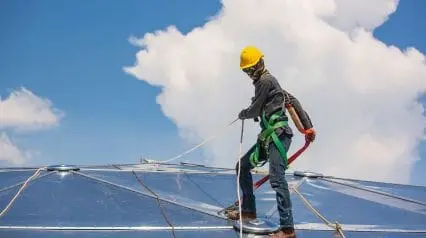What is a Fall Restraint System?
A fall restraint system, also known as a travel restraint system, is a type or set of protective mechanisms and equipment designed to keep workers at heights from falling and ensure that they do not reach any hazardous part of the working area. It is typically used in industries such as construction, roofing, window and building cleaning, and maintenance.
What are the Components of a Fall Restraint System?
Fall restraint systems come in different forms and sizes for different industries and needs. Common examples of fall restraint systems and fall protection gear include single-point anchors, horizontal lifelines, roof tie off-systems, and the like. However, a typical one consists of these 3 main components:
- Anchorage points
- Connectors such as carabiners, snap hooks, and other specialized connective devices
- Body support equipment such as harnesses and belts
Importance and Main Purpose
The main purpose of a fall restraint system is to ensure the safety of workers at heights. Performing any task high above ground level is always associated with different risks and hazards, so having fall protection systems such as fall restraints are essential.
As they are important to maintaining and promoting safety, using and wearing fall restraint systems is also mandated by law in multiple countries. Some countries with specific laws on fall restraint systems and other fall protection gears and practices include:
Difference Between Fall Restraint vs Fall Arrestor
Fall restraint systems and fall arrestor systems are similar and often used interchangeably. However, there are slight differences between each one.
A fall restraint system is often used for horizontal movement and work. Sometimes called a “travel restraint system,” it works by restricting or limiting the travel or movement of a worker so that they do not reach or fall over hazards and edges.
On the other hand, a fall arrestor or fall arrester is used vertically. Compared to fall restraint systems, a fall arrestor is designed to help workers stay stable in the air and stop or arrest them from falling.
How to Maintain It
Due to the environments they are often used in, fall restraint systems and equipment are prone to wear and tear. It is important to maintain them properly to ensure that they are in good working condition, thus also keeping their wearers and users safe at work.
Some ways you can maintain your fall restraint systems include:
- Regularly scheduled maintenance and inspections
- Properly storing and caring for your equipment
- Regularly training employees on the proper use of equipment to ensure they are used correctly
- Replacing or repairing equipment as necessary




